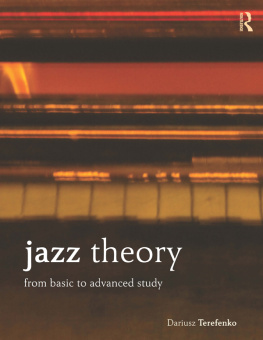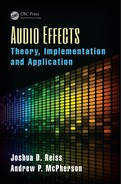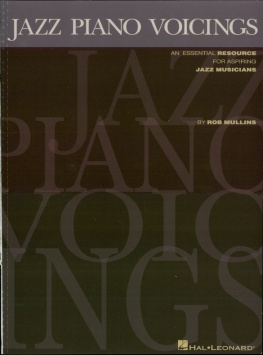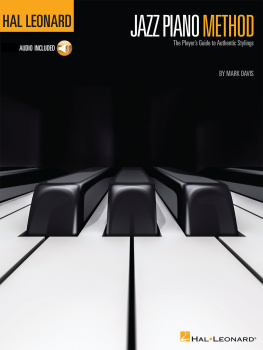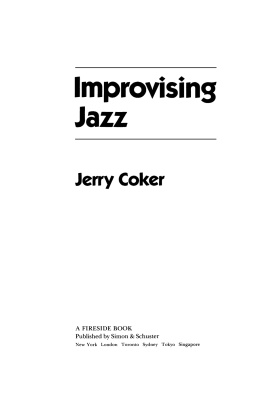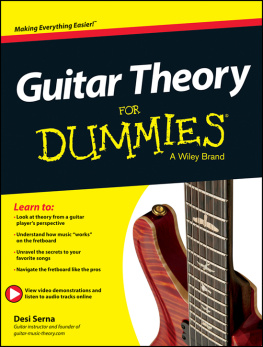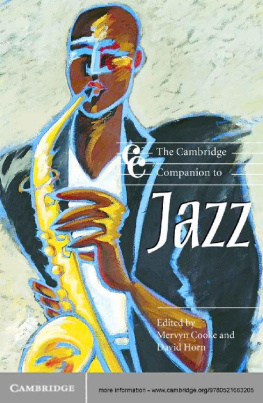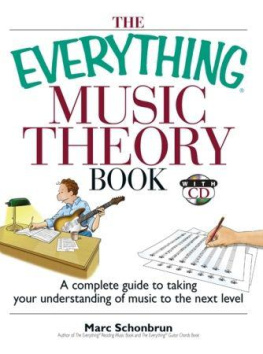Jazz Theory
Jazz Theory: From Basic to Advanced Study is a comprehensive textbook ideal for Jazz Theory courses or as a self-study guide for amateur and professional musicians. Written with the goal of bridging theory and practice, it provides a strong theoretical foundation beginning with music fundamentals through post-tonal theory, while integrating ear training, keyboard skills, and improvisation. It includes a DVD with 46 Play Along audio tracks and a companion website, which hosts the workbook, ear training exercises, and audio tracks of the musical examples featured in the book.
Key Features:
Includes 352 musical examples ranging from original lead sheets of standard tunes (Autumn Leaves, Dream Dancing), jazz instrumentals (Confirmation, Moose the Mooche), transcriptions (Moose the Mooche, Line Up), and original compositions (Billies Dance, Infidels Bounce), to fully realized harmonic progressions, sample solos, and reharmonized tunes (All the Things You Are, Stella By Starlight).
A DVD with 46 Play Along audio tracks featuring a Piano Trio, Guitar Trio, and Hammond B-3 Trio allows students to practice improvisations over different tunes and chord progressions.
Carefully graded exercises consisting of part-writing tasks, ear training drills, keyboard realization, melody harmonization, model composition, and improvisation.
Ear training exercises including rhythmic dictation, harmonic dictation, chord recognition, singing, and set-class identification.
Dariusz Terefenko is Associate Professor of Jazz Studies and Contemporary Media at the Eastman School of Music at the University of Rochester.
Jazz Theory: From Basic to Advanced Study is brilliantly organized, thoughtfully paced and sequenced, and concisely detailed. It is the most articulate and exhaustive exploration of jazz theory that Ive witnessed, making it a terrific resource for classroom instructors, private teachers, and students wishing to tackle this broad subject independently. This superb text is a welcome gift to jazz education. Bravo Dariusz!
Fred Sturm, Professor of Jazz & Improvisational Music, Lawrence University Conservatory of Music
This publication is the most comprehensive presentation I have seen that methodically illustrates the principals of Jazz theory and provides essential groundwork for musicianship skills. Professor Terefenko offers a valuable textbook for both instructors and students.
Pete Woodard, Professor of Jazz, University of Hartford
I dont think that Ive ever seen a book on Jazz Theory that was this well written! Not only is it well-written, well-researched and thorough, its very accessible and understandable regardless of ones age or level of experience. If someone asked me to recommend one book that would help them to be a better jazz musician, I would recommend this one without hesitation!
Dennis Mackrel, Musical Director of the Count Basie Orchestra
Jazz Theory
From Basic to Advanced Study
Dariusz Terefenko
Eastman School of Music,
University of Rochester

First published 2014
by Routledge
711 Third Avenue, New York, NY 10017
and by Routledge
2 Park Square, Milton Park, Abingdon, Oxon OX14 4RN
Routledge is an imprint of the Taylor & Francis Group, an informa business
2014 Taylor & Francis
The right of Dariusz Terefenko to be identified as author of this work has been asserted by him in accordance with sections 77 and 78 of the Copyright, Designs and Patents Act 1988.
All rights reserved. No part of this book may be reprinted or reproduced or utilised in any form or by any electronic, mechanical, or other means, now known or hereafter invented, including photocopying and recording, or in any information storage or retrieval system, without permission in writing from the publishers.
Trademark notice: Product or corporate names may be trademarks or registered trademarks, and are used only for identification and explanation without intent to infringe.
Library of Congress Cataloging-in-Publication Data
Terefenko, Dariusz, 1968- author.
Jazz theory: from basic to advanced study/Dariusz Terefenko.
pages cm
Includes bibliographical references.
1. JazzInstruction and study. 2. Music theory. I. Title.
MT6.T37 2014
781.6512dc23
2013031155
ISBN: 978-0-415-53759-9 (hbk)
ISBN: 978-0-415-53761-2 (pbk)
ISBN: 978-0-203-38000-0 (ebk)
Typeset in Galliard and Swiss 721
by Florence Production Ltd, Stoodleigh, Devon, UK
Senior Editor: Constance Ditzel
Assistant Editor: Denny Tek
Editorial Assistant: Elysse Preposi
Production Manager: Mhairi Bennett
Marketing Manager: Cedric Sinclair
Project Manager: Kelly Derrick
Copy Editor: Sue Edwards
Proofreader: Kilmeny MacBride
Cover Design: Jayne Varney
To my sister Natalia and my brother Zenon
Contents
PART ONE
BASICS |
PART TWO
INTERMEDIATE |
PART THREE
ADVANCED |
While teaching a theory course at the Eastman School of Music, a student came up to me after class and said: I really enjoyed your course, but I wish that instead of the countless handouts you gave us, you could write a book. It would give us something more permanenta kind of lasting documentation of your teaching methodology that we really enjoyed. I responded that I would consider his request and began ruminating about the idea of writing a book. I quickly realized, though, that the transition from class handouts to a well-organized textbook was not as straightforward as my eager student wanted me to believe.
Jazz Theory: From Basic to Advanced Study is an innovative textbook designed for undergraduate and graduate jazz students, and for an ever-increasing population of classical students interested in jazz theory and improvisation. The overall pedagogy combines theory, ear training, keyboard skills, and improvisation into a comprehensive whole that enables more effective internalization and understanding of various theoretical topics discussed in the book. Intended for 2-, 3-, or 4-semester curricula in jazz theory, ear training, improvisation, harmony, keyboard skills, jazz literature, and jazz composition courses, it can also be used as a self-study guide for professional musicians unaffiliated with an institution. Conveniently divided into three parts, each major section is written with a specific group of students in mind: for advanced students. While each of these sections creates a separate whole, they also form a comprehensive and cross-disciplinary narrative when taken together.
In addition to the traditional topics covered in the chapters on Music Fundamentals, Harmonic Function, Four-Part Chords, Five-Part Chords, Modes, The Blues, and Jazz Lead Sheets, the book engages the reader in an extensive discussion of ChordScale Theory, Bebop, and Pentatonics and Hexatonics. The book also offers some original thoughts on the phrase structure of standard tunes in the chapter on Phrase Models, and explains the principles of vertical and horizontal harmonization in the chapter on Jazz Reharmonization. The connection between theory and practice is an underlying motto of the book; this issue comes to the fore in the chapters on Improvisation, Bebop Blues, Confirmation, Moose the Mooche, and Line Up. The importance of acquiring basic keyboard skills as a necessary tool for developing comprehensive musicianship is addressed in the chapters on Keyboard Textures, Idiomatic Jazz Progressions, and Voicings. To establish more meaningful connections between different branches of theoretical discourse and jazz theory, the chapters on Phrase Models, The AABA Song Form, The ABAC Song Form, and Extended and Unusual Song Forms touch on various aspects of formal and modified Schenkerian theory, while the final chapter, Post-Tonal Jazz, makes inroads into atonal music theory, offering innovative and thought-provoking ideas for the advancement of this type of interdisciplinary research.
Next page
